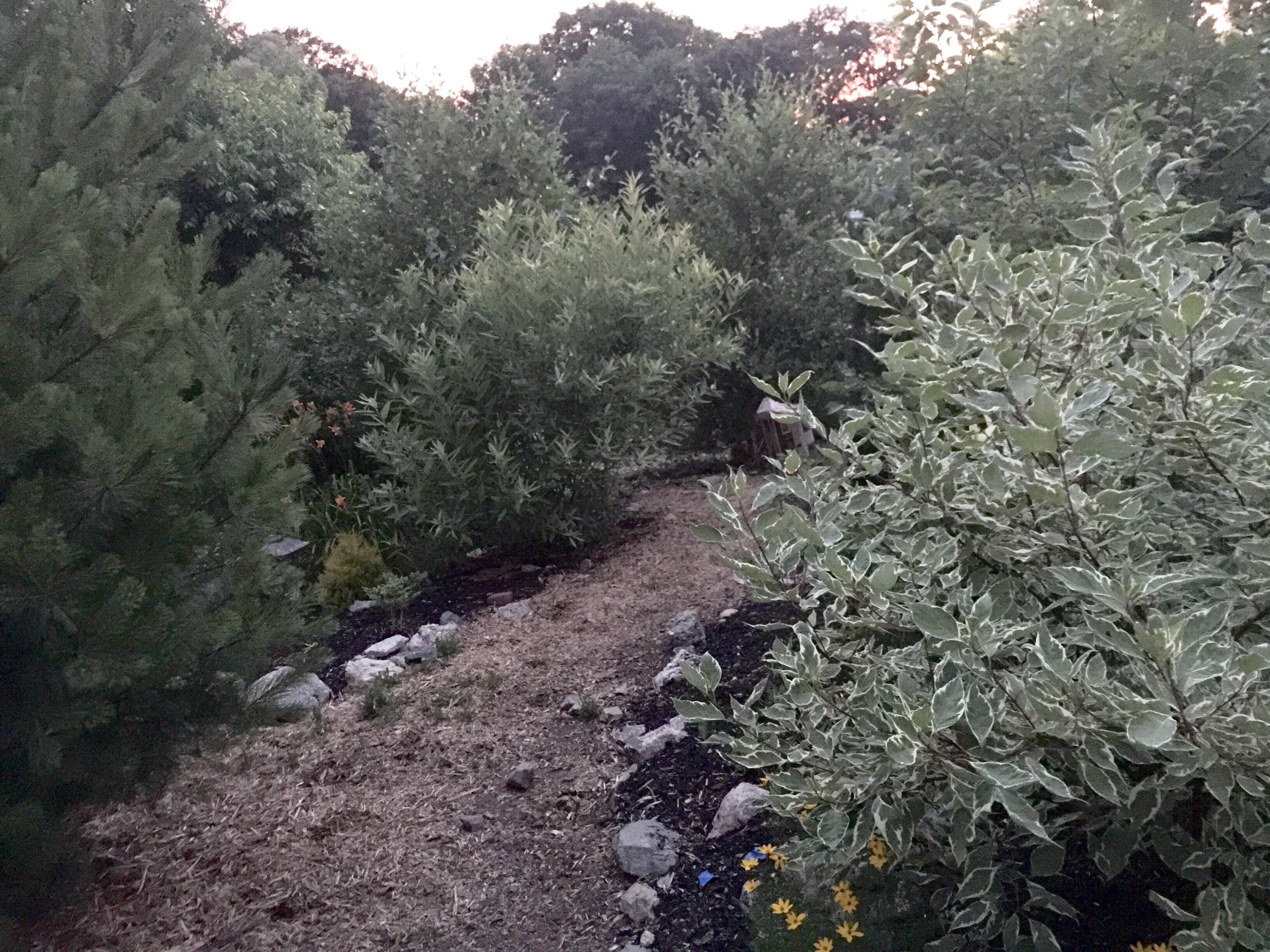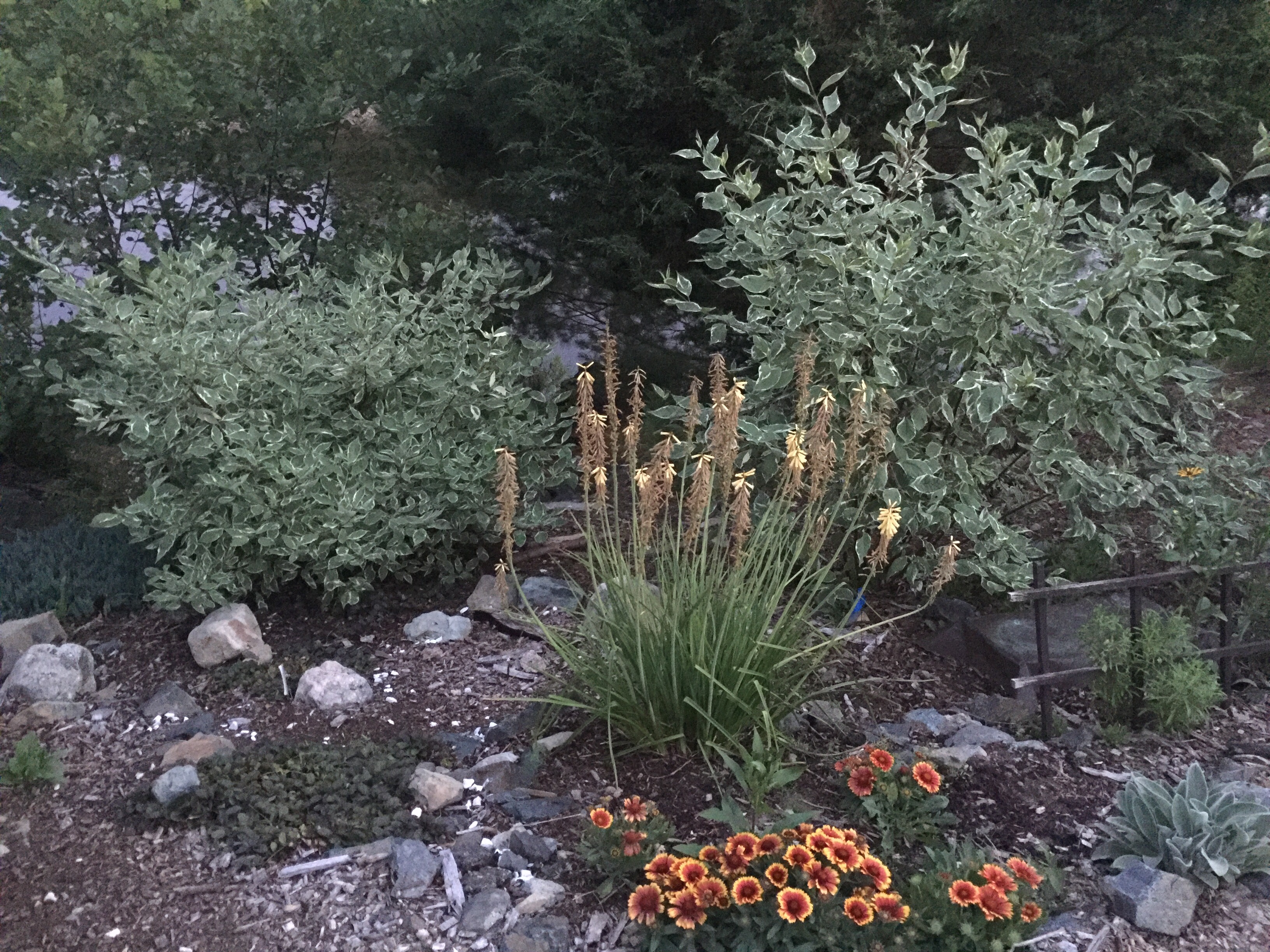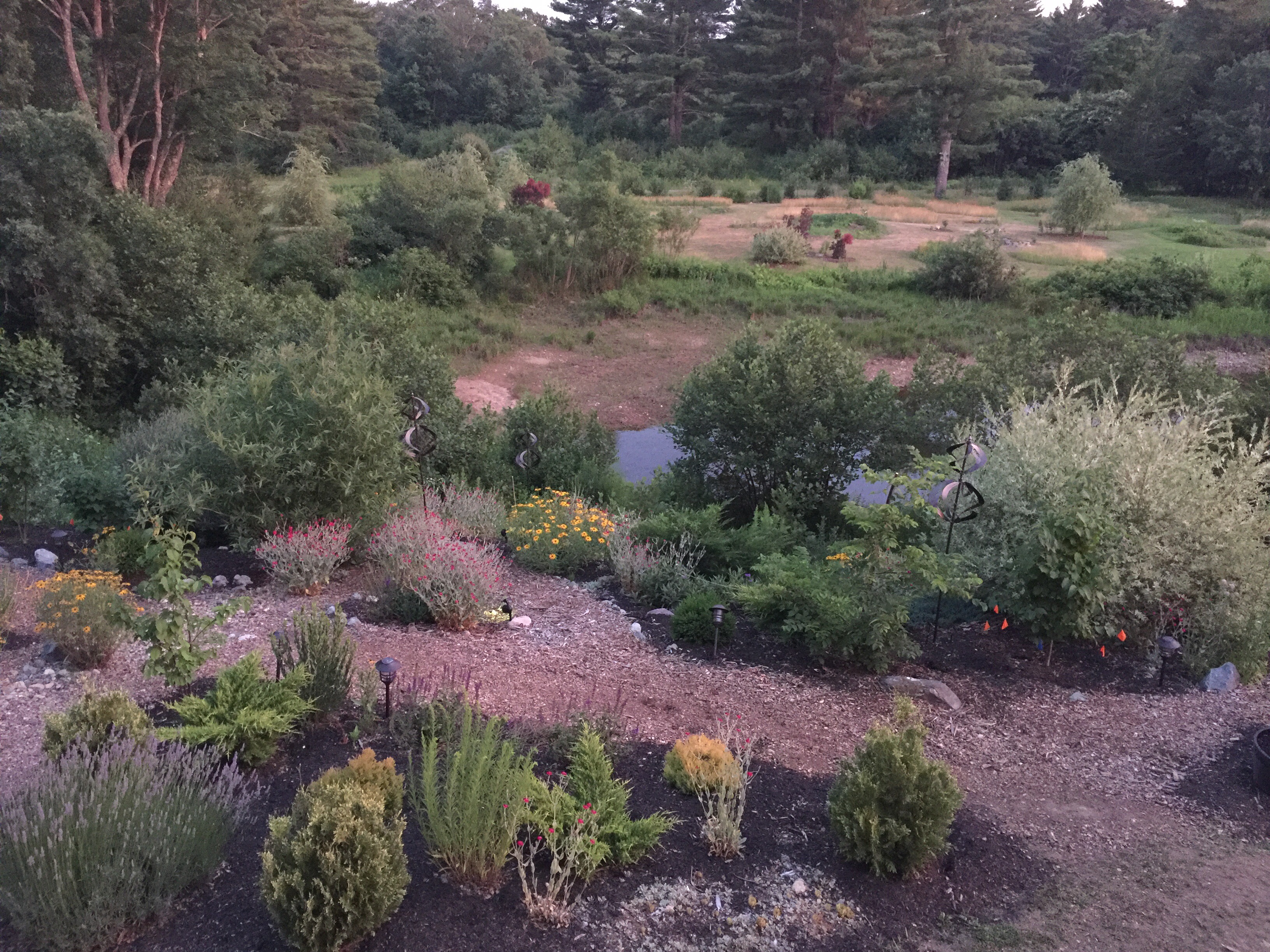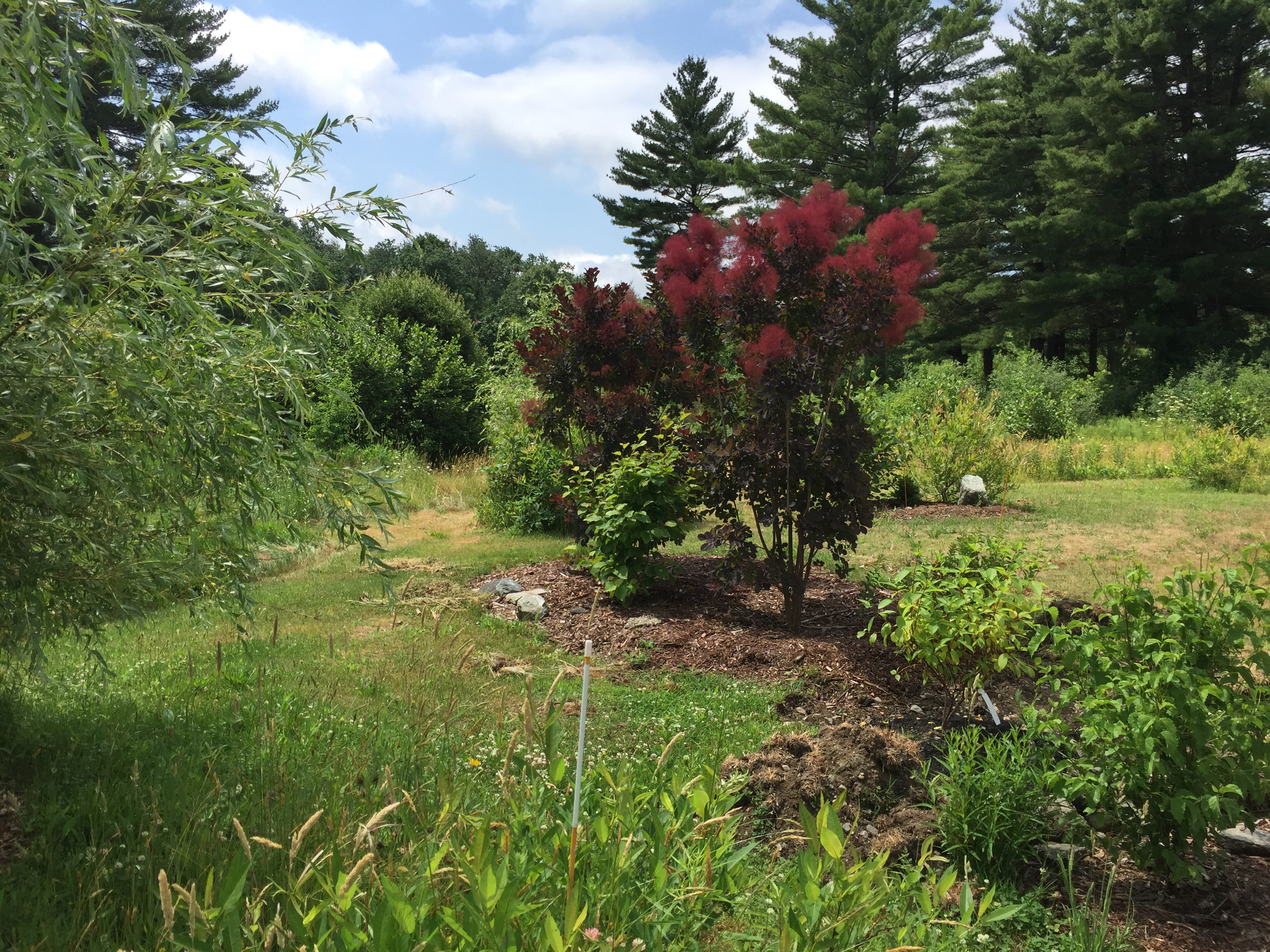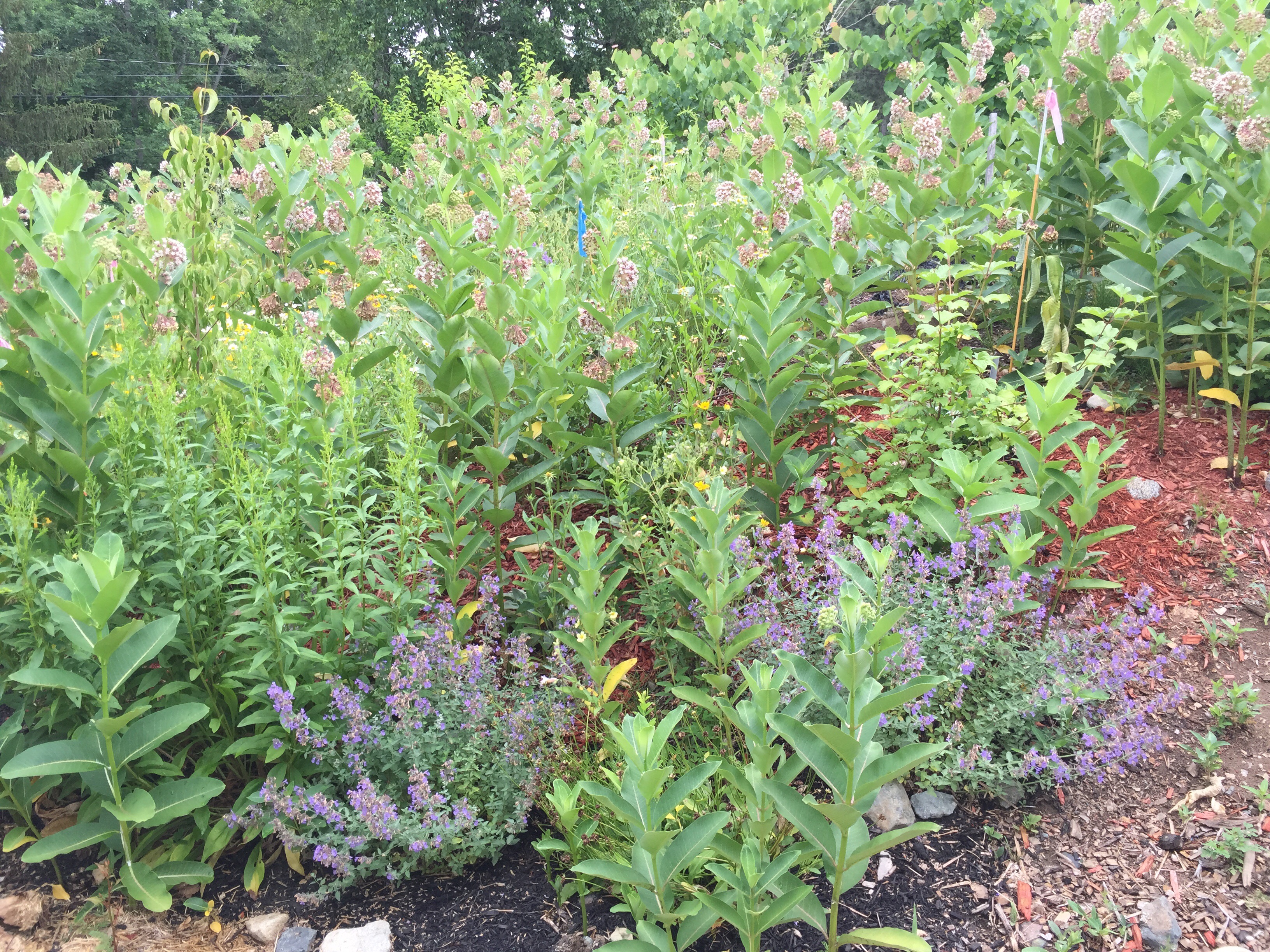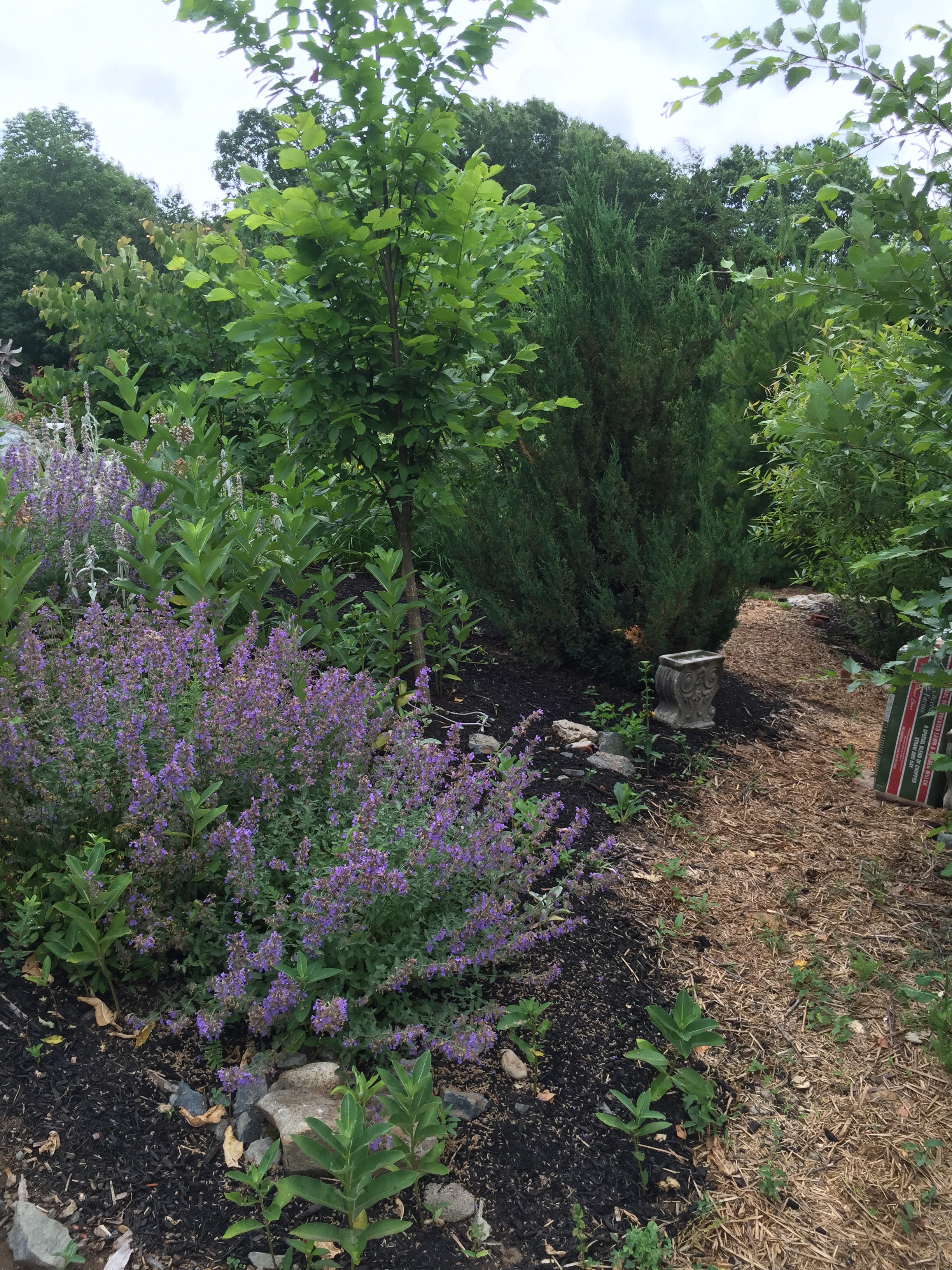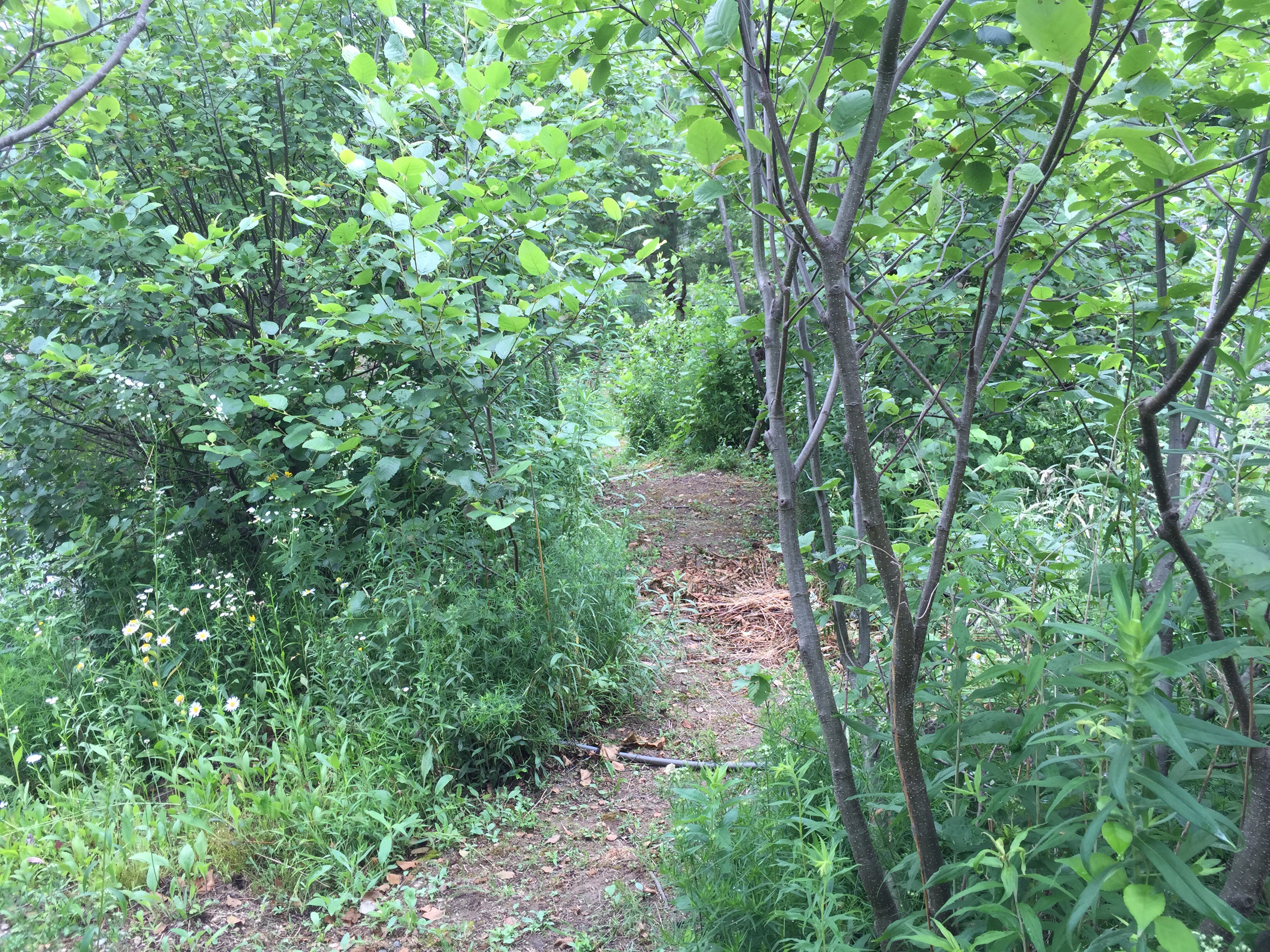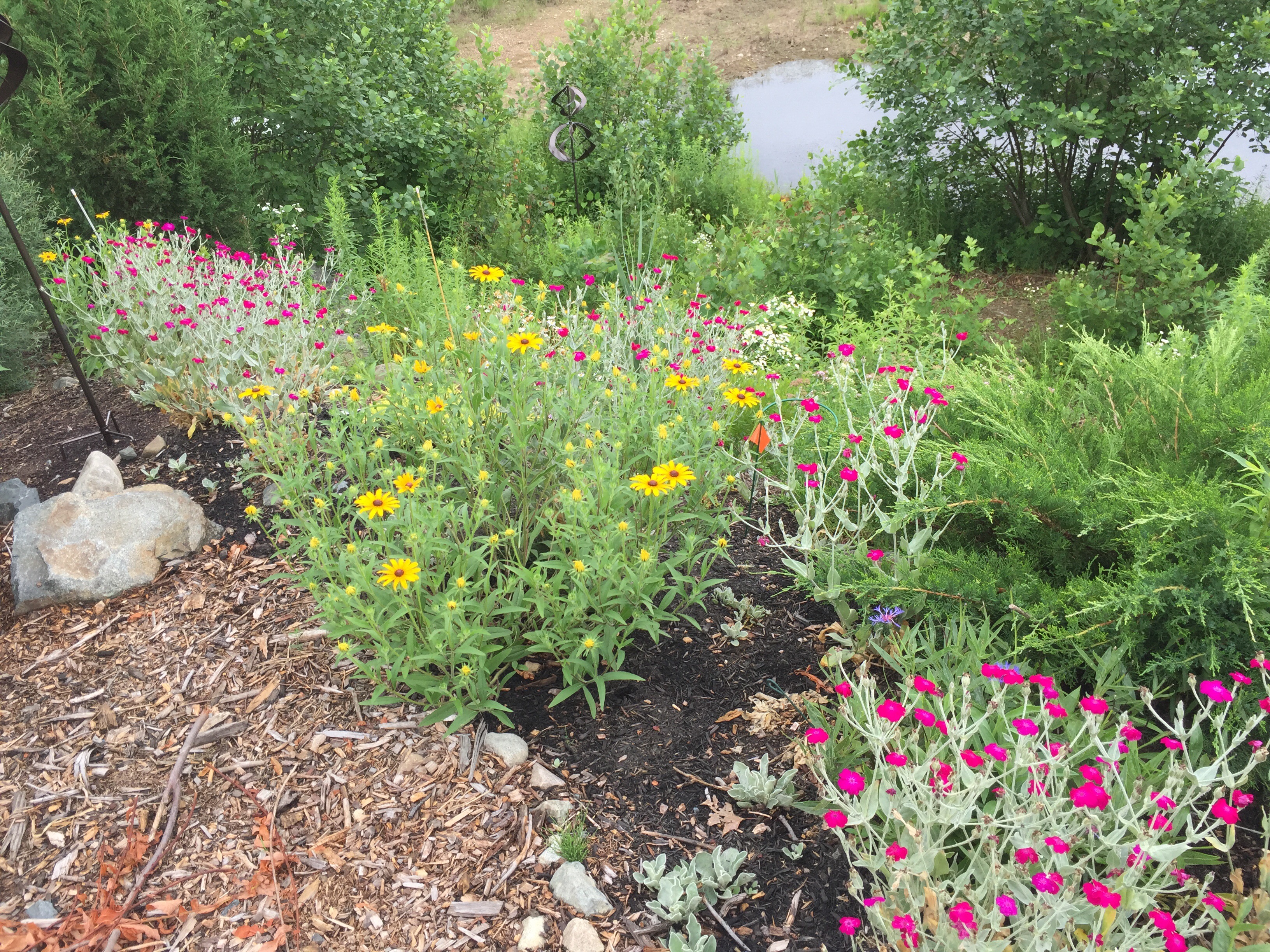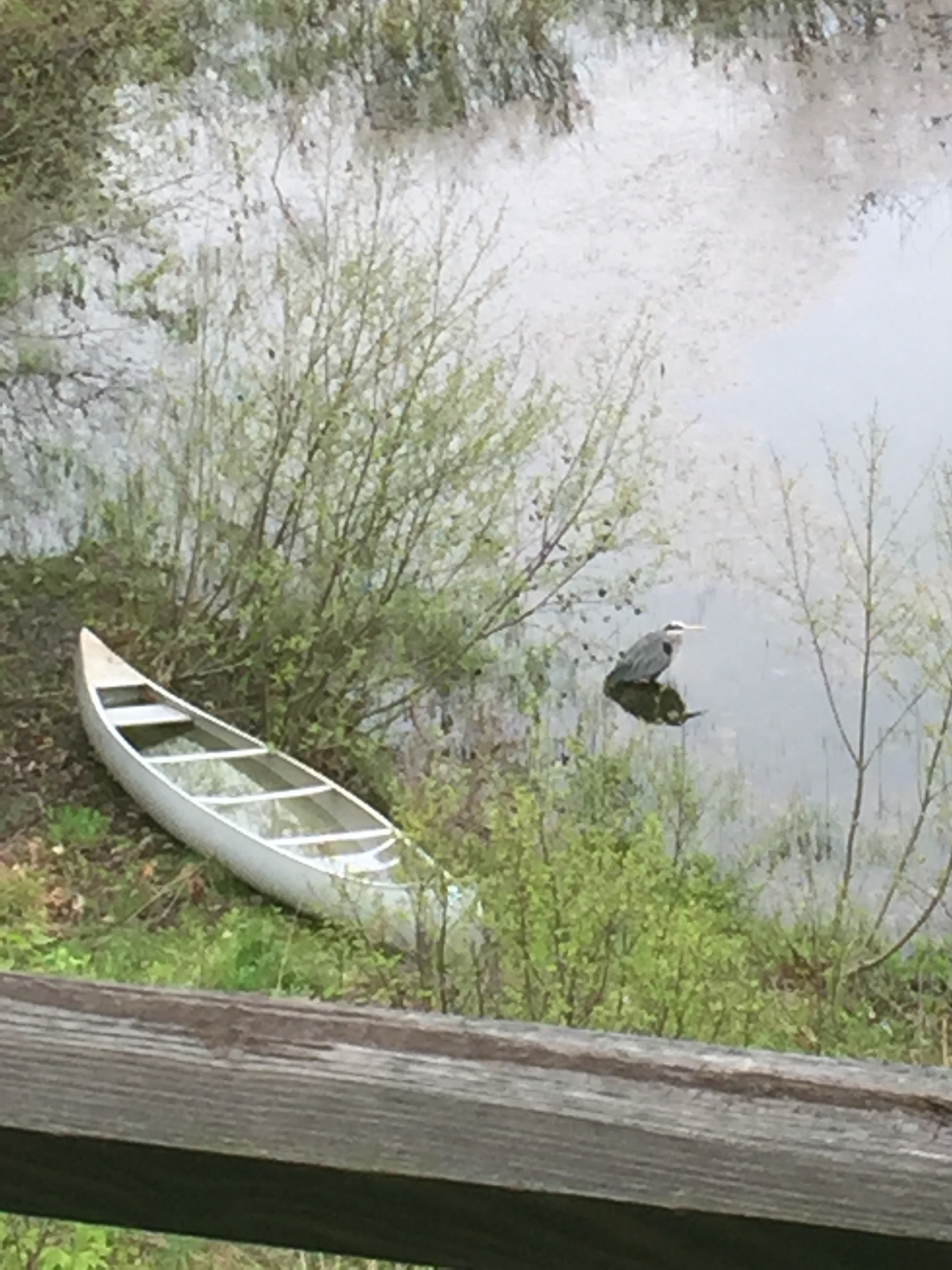In the background are the Heritage river birches (Betula nigra) that were mere twigs when we planted them in 2012. Fast growers, they’re now much taller than the white pine, willow and variegated dogwoods.
Drought-Tolerant Plants
Chips are Down
June 2016 Dry Pond
Brilliantly-Colored Smokebushes
Cotinus coggygria ‘Royal Purple’ smokebushes make quite a statement in the back acre. To their left are branches of one of the weeping willow trees, growing fairly enthusiastically, despite the low rainfall amounts we’ve had.
The native willows, viburnums, bayberries, witchhazels and dogwoods in this same general area are soon to be joined by buttonbush, clethra and allegheny serviceberries.
A few years ago, this area was overgrown with multiflora rose, buckthorn, some phragmites, and other invasives.
It Really Is Milkweed
Someone touring our garden once asked, “What is that beautiful plant that almost looks like milkweed?”
Surprise, surprise – it actually is milkweed! A number of diverse species depend on it for food and shelter, including Monarch butterflies.
A large swath of it likes to grow on a part of our upper slope, where all the Japanese knotweed used to be, so we generally leave it be. Asclepias syriaca also has a lovely scent.
Princeton Elm “Teen”
Shaded Pathway
Friendly Companions
Although the bright pink rose campion (Lychnis coronaria) is not native, it’s a good temporary filler to prevent erosion on the slope, as low junipers take their time filling in.
And, they seem perfectly at home with the unexpected native daisies that also decided to bloom!
Note: those little flags you may notice in the photo are used, in this case, to remind me of where the little bluestem grasses are planted. They’re also great at preventing erosion, yet are usually among the last to come up in early summer.
